


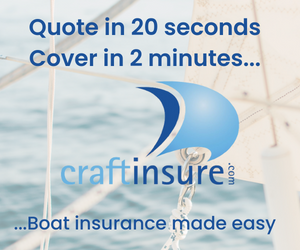

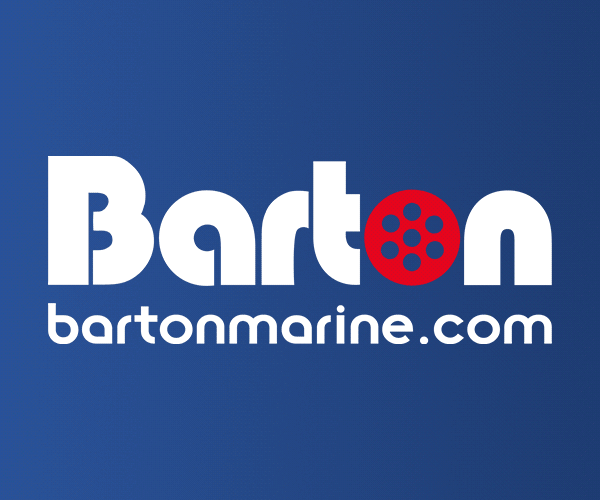


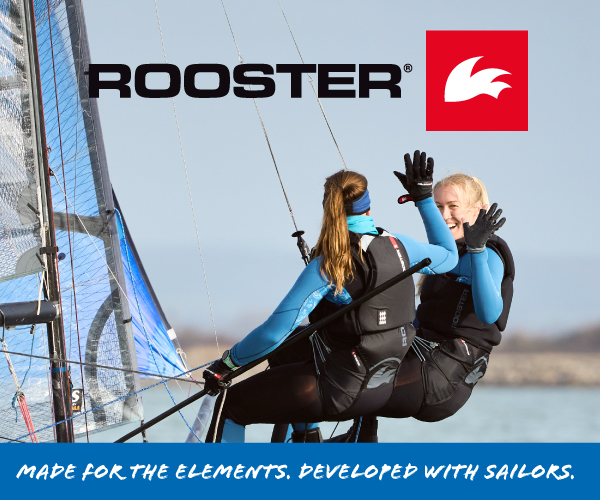



Boats for sale
| Rossiter Pintail Mortagne sur Gironde, near Bordeaux |
 |
| Laser 28 - Excellent example of this great design Hamble le rice |
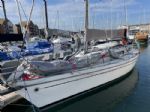 |
| Laser 140101 Tynemouth |
 |
List classes of boat for sale |
Lee-Bow..... Windsurfers...etc (Dons tin hat) |
Post Reply 
|
Page <1 1011121314 36> |
| Author | ||||||||
Hitcher 
Newbie 
Joined: 21 Dec 10 Online Status: Offline Posts: 38 |
 Post Options Post Options
 Quote Quote  Reply Reply
 Topic: Lee-Bow..... Windsurfers...etc (Dons tin hat) Topic: Lee-Bow..... Windsurfers...etc (Dons tin hat)Posted: 02 Oct 19 at 4:18pm |
|||||||
|
I sometimes pinch upwind to "get the tide on the other side of the board" and then hop onto the plane. And then I wake up.
|
||||||||
 |
||||||||
L123456 
Really should get out more 
Joined: 30 Apr 12 Online Status: Offline Posts: 500 |
 Post Options Post Options
 Quote Quote  Reply Reply
 Posted: 02 Oct 19 at 4:01pm Posted: 02 Oct 19 at 4:01pm |
|||||||
What would change your opinion; we have tried science and logic ... do we need to revert to some sort of witchcraft or voodoo? You seem destined to never learn even when people go to great lengths to explain things to you ... What is your position on the flat earth?
|
||||||||
 |
||||||||
iGRF 
Really should get out more 
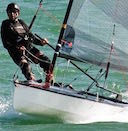
Joined: 07 Mar 11 Location: Hythe Online Status: Offline Posts: 6499 |
 Post Options Post Options
 Quote Quote  Reply Reply
 Posted: 02 Oct 19 at 12:28pm Posted: 02 Oct 19 at 12:28pm |
|||||||
Well I can't say I'd agree with that statement either, if it were easy would we be even having this discussion? I also still can't come to terms with the suggestion that the current 'actually' backs or veers anything, I think this is the fundamental point. It may 'virtually' back or veer your course, but no physical change to the shall we call it gradient wind for the purpose of the discussion rather than 'ground' wind, it makes it more understandable. What occurs are pressure variances on the driving force, caused by the vectors of the tidal current and wind flow. If that pressure can be increased, then the created wind will also increase to provide forward motion. In extreme examples, that pressure can be increased in order to actually plane, in which case the created wind becomes more of the driving force than the wind and the tide. So, one side of a course could provide planing conditions whereas the other doesn't, how you would know that without the 'feel' factor or local knowledge I think is key to the argument. It then follows the necessary assumption that a tack can be organised that will bring the tidal force more on the lee side in order to initiate planing and there we appear to fall down since yo say that is impossible if all the boats are on the same tack. When in point of fact the current might be stronger in the region where the one craft may be over the other. That can come about by the vector angle of the given tack if the tidal vector has varied over the course and explains our windsurfing friends incident. And the tactical decision made wether or not to engage with the tide if the vector were sufficient to increase pressure. Edited by iGRF - 02 Oct 19 at 12:35pm |
||||||||
 |
||||||||
Guests 
Guest Group 
|
 Post Options Post Options
 Quote Quote  Reply Reply
 Posted: 02 Oct 19 at 12:07pm Posted: 02 Oct 19 at 12:07pm |
|||||||
|
Determining whether a tide is favourable or not is quite easy. Working out whether it increases, decreases, backs or veers the ground wind is also easy as you don't have to know any precise values. I can do this very easily on the water with specific values or a vector diagram ashore.
The difficult bit is calculating whether its more favourable in one place or the other across the course when the differences are subtle and multi-factored. And even more difficult on top of that is working out whether any gain is worth the loss incurred by sailing away from the ideal VMG or putting in a tack or gybe. To do this with certainty you need to have really accurate values for all various movements at the two locations, and have a precise knowledge of your boat-speed loss from changing course. Plus most changes across a course occur over a non linear gradient, so you'll have to integrate between the two locations. This I certainly can't do in my head on the water. And for anything other than the most simple races course I'd struggle to do it on shore through a mathematical model. Then on top of that you have to add in the risk that things will change and how that may affect your finely calculated loss or net gain. By this point you'd be challenging some of the most sophisticated routing models, even if you had the input parameters, which of course you don't. I think the few models which can resolve this in real time are restricted to AC (+SailGP) and Vendee campaigns and are propriety. But in our dinghy we're very much left with 'just take a stab based upon experience'. Additionally in fleet racing you then have the presence of other boats, and how they affect you, and the likelihood of each of them selecting specific tactics. So yeah, saying whether the tide is helping or hindering in a instance, on paper, is easy. Formulating winning tactics, real time, with practically no instrumentation = the hard bit.
|
||||||||
 |
||||||||
JimC 
Really should get out more 

Joined: 17 May 04 Location: United Kingdom Online Status: Offline Posts: 6662 |
 Post Options Post Options
 Quote Quote  Reply Reply
 Posted: 02 Oct 19 at 11:27am Posted: 02 Oct 19 at 11:27am |
|||||||
Need to be very careful with that. The movement of water in relation to the land cannot be used to propel the boat relative to the water, but it still has a significant influence on where you end up relative to the land and how long it takes you to get there. Ask anyone who's attempted to beat into Langstone harbour against the tide... Edited by JimC - 02 Oct 19 at 11:28am |
||||||||
 |
||||||||
iGRF 
Really should get out more 

Joined: 07 Mar 11 Location: Hythe Online Status: Offline Posts: 6499 |
 Post Options Post Options
 Quote Quote  Reply Reply
 Posted: 02 Oct 19 at 10:31am Posted: 02 Oct 19 at 10:31am |
|||||||
|
Mozzy, thanks for that, it was the clearest explanation so far as to your thinking and now I fully get it. It's not going to change my opinion in any way shape or form, I'll still sail instinctively the way I've always sailed, but it's clear my thinking and the terminology you use are very different and I do find difficult to comprehend in reference to what happens in my real sailing world. Everything you say (well almost everything and I can't quite work out how to prove the bits that I think are wrong)is correct, you do need to work out how to get to the bits of the course where the tide is either most favourable or least unfavourable, and preferably have a strategy to that end well before the start. But you do seem to contradict yourself one the one hand saying it's easy.
Then you say this
 ) )
Finally
Edited by iGRF - 02 Oct 19 at 10:33am |
||||||||
 |
||||||||
423zero 
Really should get out more 
Joined: 08 Jan 15 Location: United Kingdom Online Status: Offline Posts: 3420 |
 Post Options Post Options
 Quote Quote  Reply Reply
 Posted: 02 Oct 19 at 9:12am Posted: 02 Oct 19 at 9:12am |
|||||||
|
Thread as a whole been good, but slightly marred by acrimony and negative overbearing posts, making you think about what you post incase you have misunderstood and called for being idiotic or lacking understanding.
|
||||||||
|
Robert
|
||||||||
 |
||||||||
CT249 
Far too distracted from work 
Joined: 08 Jul 06 Online Status: Offline Posts: 399 |
 Post Options Post Options
 Quote Quote  Reply Reply
 Posted: 02 Oct 19 at 8:33am Posted: 02 Oct 19 at 8:33am |
|||||||
|
Well said Mozzy!

|
||||||||
 |
||||||||
Guests 
Guest Group 
|
 Post Options Post Options
 Quote Quote  Reply Reply
 Posted: 02 Oct 19 at 8:29am Posted: 02 Oct 19 at 8:29am |
|||||||
The post was gone and when I reloaded it said it was blocked by an administrator.
I've defined my own terms, or picked up using terms in previous threads because they were being thrown around. The conversation would be a lot better if we took time to learn the accepted terminology and used it precisely. Myself included.
We have. Pinching or footing makes no difference in tide that you wouldn't see on a lake. Sailing boats experience no other forces than created by the sheer between air and water. The movement of water in relation to land cannot be used to propel a boat through the water if there is no contact between the boat and the shore. Tide can increase, decrease, back and veer the true wind so it is different from the ground wind. As tide changes across a course, or over time, the vector of the tide wind will change, and therefore you can predict changes to the true wind. Being able to predict wind shifts that can be leveraged for tactical gain is an advantage. If someone wants to get better at sailing in tide, they should ignore lee bow myth and focus on the above.
You're saying this as if it's soming difficult thing to do. It's pretty obvious whether tide is taking you toward or away from your next mark. And it's pretty easy to tell if the tide is adding, subtracting, backing or veering the ground wind to affect the true wind. But there is nothing you can do with you boat or sails to change the above. So footing or pinching is useless by itself. All you can do is focus on sailing to a part of the course where tide is more favourable. This is the hard bit and where interesting discussions may happen, which we never get to on this forum because you bog us down in your stupid pinching or footing stuff.... you know, like whether it's worth the loss of tack to get in to better current, or sailing a slower VMG mode to get to better current quicker. Or ignore oscillating shifts and sail a few short phase headers to get to better current. On the water it is the above mental calculations I find impossible to do with any certainty, not least because without instruments it's impossible to be certain of the inputs. You're estimating half the inputs and imagining the vectors then ultimately making a guesstimate of what the gain might be and what your VMG loss would be. And on the water you often have to make these decisions in seconds as clear air lanes open and close on the course around you. That for me is what makes sailing fascinating, infuriating but ultimately great... but instead we have 25 pages of just going round and round with your flat earth theory. I guess that's just the internet.
|
||||||||
 |
||||||||
iGRF 
Really should get out more 

Joined: 07 Mar 11 Location: Hythe Online Status: Offline Posts: 6499 |
 Post Options Post Options
 Quote Quote  Reply Reply
 Posted: 01 Oct 19 at 7:14pm Posted: 01 Oct 19 at 7:14pm |
|||||||
Why would you want moderation Mozzy? Because the opinion differs with your own? Truth was I had a moment of clarity and can now fully understand how you are all so wrong headed imv, following all those posts, was half way through working on an equation to illustrate my view point but the phone rang and business took over I posted it it before I'd fully thought it through and finished, so deleted it, then thought why waste your time anyway. The moment has gone now, so all I'd leave you with is the thought of how a GPS might have helped or hindered our young windsurfing friend. How the knowledge that what he did was 'wrong' or mathematically impossible? Maybe the maths don't work the same for windsurfers, we don't have instruments after all and can only use our instincts and the force. It is certainly true that footing off in an unfavorable tide will kill you every time, it is also true that getting the tide on the lee side immediately increases the sensation of power through the rig because you can feel it. In certain circumstances that increase in tidal power can induce planing and an exponential speed increase that will absolutely destroy the footing off fellow. My post was requesting that someone smart enough could work on an equation that might illustrate that, it may even exist in naval architect school. But you cannot rely on half those illustrations above in our world, they may work offshore, I'm not even sure they are true in light dinghys. GPS cannot define true wind unless it's connected to a land based sensor. I can only assume that it calculates apparent wind from an algorythm, difficult for me to argue against as I've never experienced one other than as a device to measure ground speed at speed trials etc. I also suggested in the deleted post that the term 'tidal wind' was confusing, since it really is a misnomer in anything other than completely still situations, the rest of the time it is simply a contributor to or reduction factor of the actual or 'true'wind ultimately affecting the 'apparent or virtaul wind' which in itself is varied hugely by the created wind and that varies according to the drag coefficients of the particular size and weight of the hull. So my proposal is that we should find some common ground on areas that we do agree on. One of those must be to accept that sailing with tide adding to the wind power is better than the opposite. Then, there needs to be a defining calculation going from 180 degrees opposite, to 0 and work out at what point in a given style of craft that it ceases to be positive to our goal. So rather than arguing round and round we achieve some goal from all this. Edited by iGRF - 01 Oct 19 at 7:21pm |
||||||||
 |
||||||||
Post Reply 
|
Page <1 1011121314 36> |
| Forum Jump | Forum Permissions  You cannot post new topics in this forum You cannot reply to topics in this forum You cannot delete your posts in this forum You cannot edit your posts in this forum You cannot create polls in this forum You cannot vote in polls in this forum |
Bulletin Board Software by Web Wiz Forums® version 9.665y
Copyright ©2001-2010 Web Wiz
Change your personal settings, or read our privacy policy
Copyright ©2001-2010 Web Wiz
Change your personal settings, or read our privacy policy












 Printable Version
Printable Version Delicious
Delicious Digg
Digg Facebook
Facebook Furl
Furl Google
Google MySpace
MySpace Newsvine
Newsvine reddit
reddit StumbleUpon
StumbleUpon Twitter
Twitter Windows Live
Windows Live Yahoo Bookmarks
Yahoo Bookmarks Topic Options
Topic Options